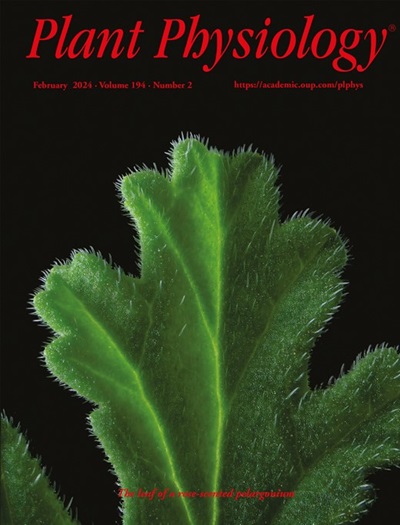中国枫及其秋叶颜色进化的基因组见解
IF 6.9
1区 生物学
Q1 PLANT SCIENCES
引用次数: 0
摘要
在这里,我们报道了中国甜基因组的染色体水平组装。系统发育分析表明甜菊属核心科植物的基础系统发育位置。比较基因组分析显示,已知的核心植物共同祖先的伽马事件在中国甜的基因组中很明显,并且由该事件产生的祖先三复制块在中国甜中比在葡萄中更完整。由于其基因组结构保守,进化速度极慢,系统发育位置较低,是比较基因组研究的良好参考。此外,我们通过代谢组学和转录组学重建了该物种花青素的整个代谢途径和秋叶颜色的潜在调控网络。转录因子LfMYB69、basic helix-loop-helix (LfbHLH4)和WD40-repeat (LfWDR1)可能共同调控花青素生物合成基因的转录。荧光素酶测定证实了LfMYB69-LfbHLH4-LfWDR1复合物对查尔酮合成酶基因(LfCHS1-3)和二氢黄酮醇4-还原酶基因(LfDFR1-2)的调控作用。表观基因组学分析显示,包括LfCHS1在内的5个结构基因和2个调节性lfmyb受表观遗传调控。该研究扩大了我们对秋叶颜色的认识,并为比较生物学、育种和生物技术提供了宝贵的基因组资源。本文章由计算机程序翻译,如有差异,请以英文原文为准。
Genomic insights into the evolution of Chinese sweetgum and its autumn leaf coloration
Chinese sweetgum (Liquidambar formosana) is valued as a source of resin and timber and is an important ornamental tree due to its showy fall foliage. Here, we report the chromosome-level assembly of the Chinese sweetgum genome. Phylogenomic analyses showed the basal phylogenetic position of Chinese sweetgum in core eudicots. Comparative genomic analyses revealed that the well-known gamma event in the common ancestors of core eudicots is evident in the Chinese sweetgum genome, and ancestral triplicated blocks resulting from that event are more intact in Chinese sweetgum than in grapevine (Vitis vinifera). Because of its conserved genome structure, very slow rate of evolution, and basal phylogenetic position, the Chinese sweetgum genome is a good reference for comparative genome studies. Further, we reconstructed the entire metabolic pathway for anthocyanins and potential regulatory networks of autumn leaf coloration of this species via metabolomics and transcriptomics. The transcription factors LfMYB69, basic helix–loop–helix (LfbHLH4), and WD40-repeat (LfWDR1) may collectively regulate the transcription of anthocyanin biosynthetic genes. The regulation of chalcone synthase genes (LfCHS1-3) and dihydroflavonol 4-reductase genes (LfDFR1-2) by the LfMYB69-LfbHLH4-LfWDR1 complex was confirmed by luciferase assays. Epigenomic analyses revealed that five structural genes, including LfCHS1, and two regulatory LfMYBs are epigenetically regulated. This study expands our understanding of autumn leaf coloration and provides valuable genomic resources for comparative biology, breeding, and biotechnology.
求助全文
通过发布文献求助,成功后即可免费获取论文全文。
去求助
来源期刊

Plant Physiology
生物-植物科学
CiteScore
12.20
自引率
5.40%
发文量
535
审稿时长
2.3 months
期刊介绍:
Plant Physiology® is a distinguished and highly respected journal with a rich history dating back to its establishment in 1926. It stands as a leading international publication in the field of plant biology, covering a comprehensive range of topics from the molecular and structural aspects of plant life to systems biology and ecophysiology. Recognized as the most highly cited journal in plant sciences, Plant Physiology® is a testament to its commitment to excellence and the dissemination of groundbreaking research.
As the official publication of the American Society of Plant Biologists, Plant Physiology® upholds rigorous peer-review standards, ensuring that the scientific community receives the highest quality research. The journal releases 12 issues annually, providing a steady stream of new findings and insights to its readership.
 求助内容:
求助内容: 应助结果提醒方式:
应助结果提醒方式:


